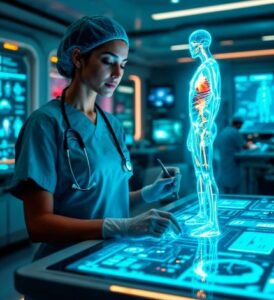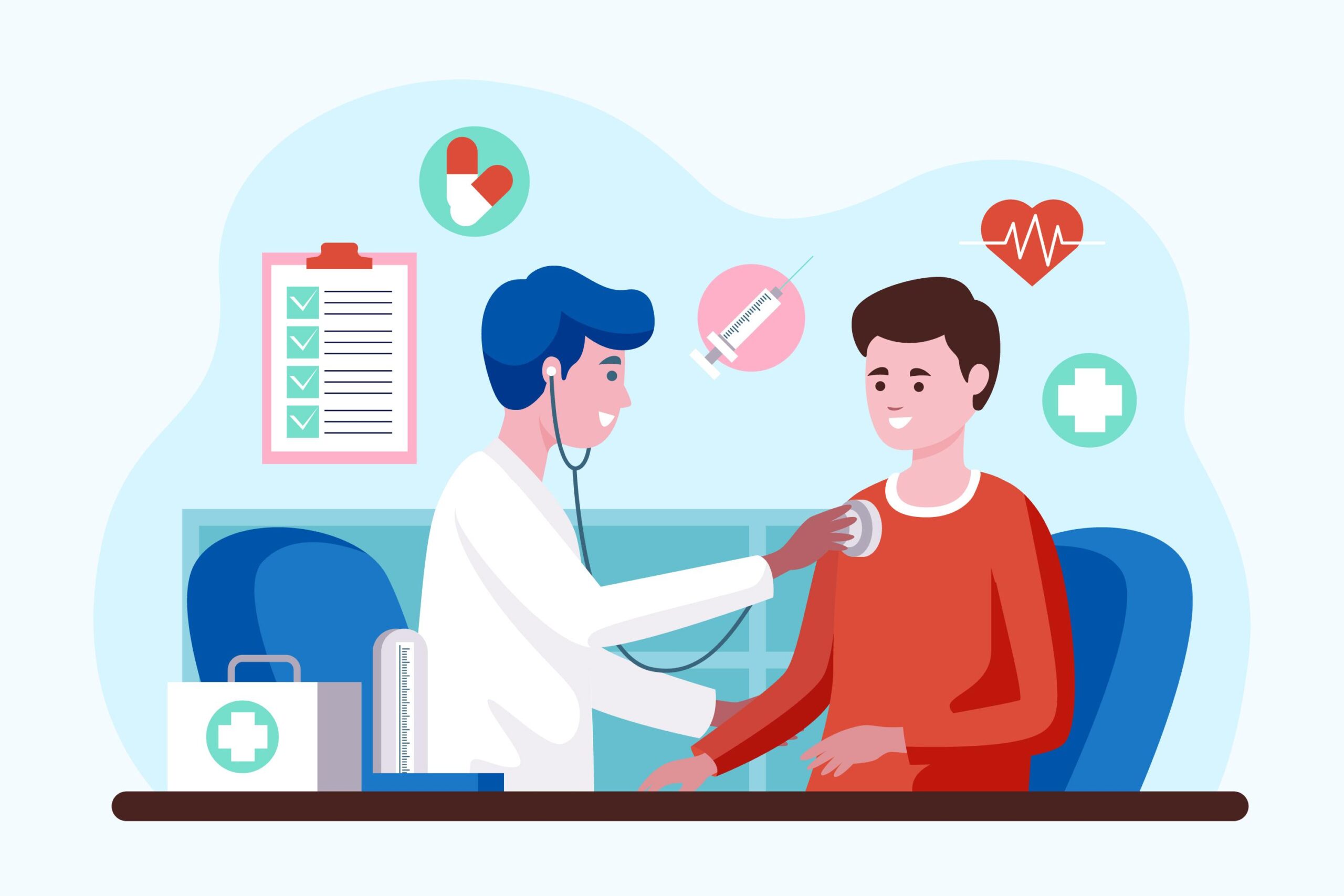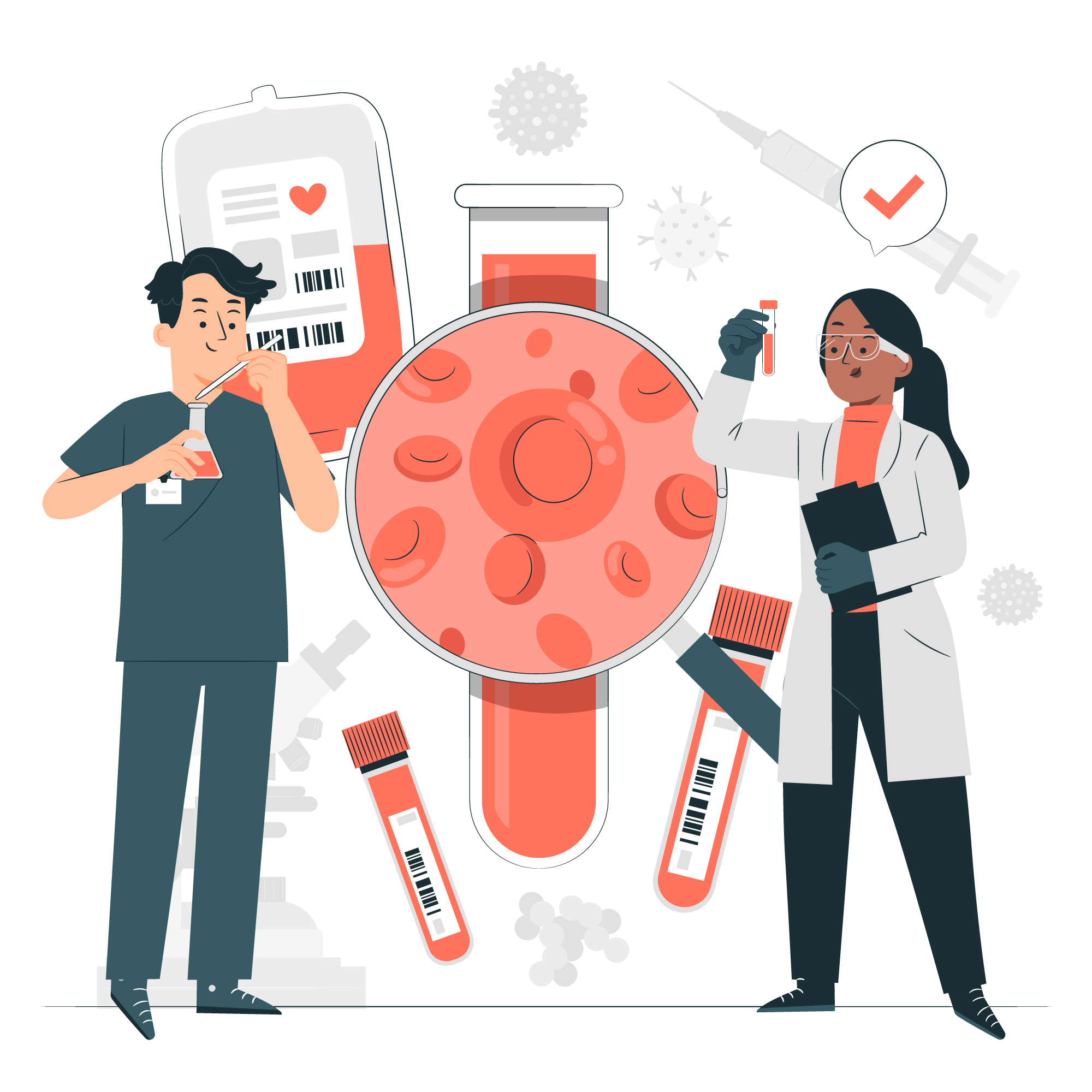“In today’s digital age, Artificial Intelligence isn’t just helping you choose movies on Netflix — it’s reading your blood test reports, analyzing X-rays, and predicting diseases before they even show symptoms.”
🧠 Introduction: The Rise of AI in Medicine
Artificial Intelligence (AI) is no longer a futuristic concept or just the domain of tech giants. It’s right here, actively transforming one of the most important areas of our lives — AI in healthcare diagnostics.
From major hospitals in New York to private pathology labs in Mumbai and Bengaluru, AI is being used to analyze lab reports, medical scans, and patient data with astonishing speed and accuracy.
So the next time you go in for a blood test, X-ray, or ultrasound, don’t be surprised if an AI system is quietly working in the background to assist your doctor.
This blog will explain, in simple terms:
What is AI in diagnostics?
How it works
Where it’s being used
The benefits for patients
What to know before you take your next test
🤖 What Is AI in Healthcare Diagnostics?
AI in diagnostics refers to the use of machine intelligence — particularly machine learning and deep learning — to analyze complex medical data like:
Lab test results
Imaging scans (X-rays, MRIs, ultrasounds)
Patient health records
Genetic data
These AI systems are trained on millions of past cases to identify patterns that a human doctor might miss or overlook.
They don’t replace medical professionals but assist them by automating repetitive tasks, flagging anomalies, and improving diagnosis speed and accuracy.
📚 How Does AI Actually Work in Diagnostics?
Here’s a simple explanation of what happens behind the scenes:
✅ Step 1: Data Training
AI algorithms are fed with a large dataset — for example, thousands of X-rays labeled with healthy or diseased conditions.
✅ Step 2: Pattern Recognition
The system learns to identify patterns and markers that indicate certain diseases (like pneumonia in a chest X-ray or anemia in a blood smear).
✅ Step 3: Real-Time Analysis
When a new patient’s test comes in, the AI compares it with all it has learned to give suggestions — like possible diagnoses or areas to examine further.
✅ Step 4: Decision Support
Doctors and lab technicians use the AI’s insights to verify, cross-check, and finalize the diagnosis.
Key AI Tools in Diagnostics:
IBM Watson Health
Google DeepMind Health
Aidoc (for radiology)
PathAI (for digital pathology)
Qure.ai (Indian AI for radiology)
🔬 Where Is AI Being Used in Healthcare Diagnostics Today?
AI is already integrated into several areas of diagnostic medicine across India and the world.
1. Pathology & Lab Tests
AI helps in analyzing:
Blood smear slides (detecting malaria, dengue, anemia)
CBC (Complete Blood Count) patterns
Cancer cells in biopsy slides
Urine & stool microscopy
2. Radiology & Imaging
AI assists radiologists by scanning:
Chest X-rays
Mammograms for early breast cancer
CT/MRI scans for tumors or bleeds
Ultrasound images for organ abnormalities
3. Cardiology
In ECG and 2D Echo, AI systems detect:
Irregular heart rhythms
Valve issues
Heart enlargement
Blood flow abnormalities
4. Preventive Healthcare & Risk Prediction
AI combines patient history, lifestyle data, and test results to:
Predict chances of diabetes, heart attack, or stroke
Suggest preventive measures
Track chronic disease progression
🧑⚕️ Why Patients Should Care About AI in Diagnostics
AI in healthcare diagnostics may sound like a “behind-the-scenes” thing, but it directly impacts the quality of care you receive.
💡 Benefits for Patients:
1. ⏱️ Faster Test Reports
AI systems work 24/7. No fatigue, no breaks. This means:
Faster pathology reports
Real-time radiology scan analysis
Shorter waiting time for diagnosis
2. 🎯 Higher Accuracy in Detection
AI can spot minute abnormalities — like early cancer cells or small nodules — which might escape the human eye.
3. 🔁 Consistent Results
Unlike humans who can have off days, AI maintains high consistency across thousands of samples.
4. 🔍 Early Disease Detection
AI in healthcare diagnostics can detect patterns that suggest:
Prediabetes
Hypertension risk
Thyroid irregularities
Vitamin deficiencies
This helps you take preventive action before diseases get serious.
5. 💰 Cost-Effective (in the Long Run)
Automated systems reduce manual labor, error correction, and report delays — making diagnostics faster and more affordable over time.
🌍 How India Is Adopting AI in Diagnostics
India is one of the fastest adopters of AI healthcare solutions, particularly due to:
A large population with rising chronic diseases
Limited availability of specialists in rural areas
Increasing access to smartphones and cloud computing
Notable Indian AI Tools:
Qure.ai – Used in several Indian hospitals for X-ray and brain CT analysis
Niramai – Thermal AI-based breast cancer screening tool
Aira Matrix – AI-powered cytology and histopathology analysis
Predible Health – Liver and lung disease detection using AI imaging
⚠️ What to Know Before Your Next AI-Assisted Test
Even as AI in healthcare doagnostics becomes more common, patients should be informed and aware. Here are a few things to consider:

✅ 1. Human Oversight Is Still Crucial
AI may assist with data analysis, but the final diagnosis is always confirmed by a qualified doctor.
✅ 2. Privacy and Data Security
Your diagnostic data is valuable and sensitive. Ensure the diagnostic lab uses secure systems and follows data protection laws (like India’s Digital Personal Data Protection Bill).
✅ 3. Not All Labs Use AI (Yet)
While large hospitals and premium diagnostic chains have started using AI tools, many smaller labs may still rely on manual interpretation. Feel free to ask your lab if AI assistance is part of the process.
✅ 4. AI Doesn’t Replace Doctors
No matter how intelligent a machine becomes, it can’t replace the clinical judgment, experience, and empathy of a human doctor. AI is a support tool, not a standalone diagnosis.
🔮 What’s the Future of AI in Healthcare Diagnostics?
Here’s what you can expect in the next 5 years:
Instant Lab Results: Automated devices that analyze samples at home or in the clinic instantly
Wearables + Diagnostics: Your smartwatch might soon recommend a diagnostic test based on real-time heart or sleep data
Personalized Health Reports: Based on your genetics and health history, AI will recommend tests and treatments specific to you
Rural Healthcare Access: AI-powered portable diagnostic tools will enable quality health checkups even in villages and remote areas
📌 Conclusion: Smart Tech. Smarter Health Decisions.
Artificial Intelligence is not here to make healthcare colder and robotic. On the contrary, it’s making diagnostics:
More accurate
More accessible
More affordable
More preventive than reactive
As a patient, being aware of how AI in healthcare diagnostics influences your test results and diagnosis empowers you to make smarter health decisions.
So, the next time you’re due for a blood test, X-ray, or health checkup, ask:
“Is AI helping analyze this report?”
You may just be surprised at how far we’ve come.


